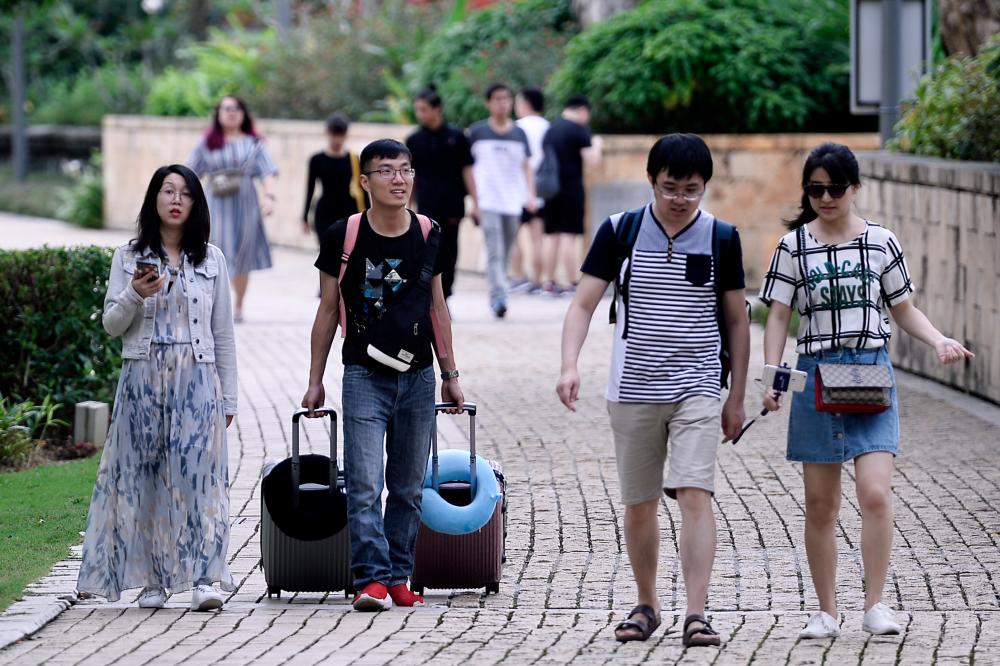Will Malaysia’s Tourism Industry Survive another BLACK SWAN event in 2023 ?

What is BLACK SWAN event ?
Have you seen a black swan lately ??? White Swan is common but Black Swan is very rare ..
According to Wikipedia ,BLACK SWAN events is a “metaphor” that describes an event that comes as a surprise, has a major effect, and is often inappropriately rationalized after the fact with the benefit of hindsight.
A black swan event is a term used to describe a highly improbable and unpredictable event that has severe consequences. Black swan events are often characterized by their extreme rarity, their severe impact, and the widespread disbelief that they can occur.
In other words, Black Swan event is unexpected shocks that can cause catastrophic damage to economies such as tourism industry.
Yes, black swan events can have significant effects on the tourism industry
A recent example of Black Swan event was the Covid-19 pandemic.
Many countries implemented travel restrictions and border closures, which led to a significant decrease in international travel. The tourism industry was also affected by the economic downturn that resulted from the pandemic, as many people had to cut back on discretionary spending.
The global tourism industry has been in an unprecedented severe crisis for the past three years that fits “the Black Swan” theory, developed by the American economist Professor Nassim Nicholas Taleb.

Although there have been people warning for the past 20 years about lethal viruses that could result in a global pandemic, the pandemic COVID-19, which has affected the world since January 2020, was unforeseen and for which no one planned.
The unpreparedness of humanity as a whole turned the current pandemic into an extraordinary extreme event that utterly changed society and severely damaged economic sectors worldwide.
Black swan events have far-reaching consequences for the tourism industry. They can lead to a decrease in travel demand, disruptions to supply chains and the movement of goods, and a decrease in the availability of tourism-related services. These effects can be especially pronounced in regions that rely heavily on tourism as a key source of economic activity
The World Tourism Organisation estimates the tourism industry’s losses during the pandemic at $4 trillion, and there is no end on the horizon.
In 2020, the tourism industry in Malaysia was greatly affected by the Covid-19 pandemic, resulting in a ‘black swan event’.
The effects of this event rippled throughout all areas of the industry, from small destination businesses to large international agencies. The sudden stop of inflow of tourists as well as prohibition of flights caused negative ripple effects to many tourism-based businesses in Malaysia. Hotels and resorts were drastically impacted, with occupancy rates dropping dramatically due to a decrease in local visitors and foreign travelers.
Similarly, restaurants experienced vastly reduced numbers of patrons while tour operators saw cancellations for both domestic and international trips.
Global tourism experienced a 4% upturn in 2021, compared to 2020 (415 million versus 400 million). However, international tourist arrivals (overnight visitors) were still 72% below the pre-pandemic year of 2019, according to preliminary estimates by UNWTO. This follows on from 2020, the worst year on record for tourism, when international arrivals decreased by 73%
The Malaysian government responded with numerous strategies aimed at mitigating these losses and supporting struggling businesses during the pandemic such as introducing travel subsidies programs such as e voucher to boost travel.
Additionally, digitalization initiatives have been implemented across industries, providing a platform for virtual conferences events to ensure Malaysian businesses remain competitive during this period. Despite all efforts to revive the economy after the black swan event, it may take years before the tourism sector will fully recover from the shockwaves caused in 2020.
According to United Nation World Tourism Organisation (UNWTO), global tourism will recover in 2024 at the earliest..
The question is : What if there is another BLACK SWAN event in 2023 ?? Will our Malaysian tourism industry survive ???
Predictions for 2023 suggest that tourism might not fully recover to pre-pandemic levels as we continue to feel the ripple effects of this global crisis.
Economists are in consensus that Malaysia will likely dodge a recession this year.
Unexpected shocks that can cause catastrophic damage to economies as referred to “Black Swan” event could happen in 2023. Such as:
- Some possible Black Swans Event could be an escalation in the Russia-Ukraine war if Nato is somehow dragged into the conflict, or a military flare-up in the Taiwan straits between China and Taiwan, and the US.
- Any such scenario would crash global stock markets, and precipitate a surge in oil and gas prices, fuelling inflation and more aggressive interest rate hikes.
- Or there could be the emergence of a deadly Covid variant that plunges the world into lockdowns once again.
If due to above happens , there will be a political unrest or a resurgence of the virus, this would have an even larger effect on areas dependent on international tourism such as Malaysia.
Destination businesses and tour operators would be forced to adapt their operations in order to survive these new conditions while travelers may face new challenges when attempting to book flights or find accommodation within certain countries.
The other possible scenario is a drastic drop in global demand for travel due to extreme economic uncertainty or fear. With budgets shrinking and people being more cautious with their spending, immediate short-term recovery strategies may not be enough to boost tourist numbers and keep businesses profitable in Malaysia.
While no one can predict exactly what will happen during 2023, it is important that those involved in Malaysian tourism continue preparing for worst case scenarios and have plans in place should another ‘black swan event’ occur.
In order for the tourism industry in Malaysia to survive from another potential BLACK SWAN EVENT, there are several steps that need to be taken.
First, the Malaysian government must provide support to affected industries by introducing financial aid and subsidies for struggling businesses. This could include tax relief or grants for funding digital transformation initiatives. Additionally, visa waivers and travel discounts should be offered in order to encourage more visitors to come and explore the country during uncertain times. The authority also need to relook or revisit the overburdened and redundant regulation. It will assist the players to survive from the crisis.
Secondly, tourism-dependent businesses should begin investing in digitalization and transformation initiatives in order to remain competitive in an ever-evolving marketplace. Relying on traditional methods of promotion such as print ads is no longer enough; instead companies must consider utilizing new technologies like virtual events, video streaming services, and social media platforms.
Finally, it is important that all parties work together towards recovery so that when another black swan event arises they will be prepared. Building relationships with other countries within different regions can help form agreements which grant access to markets beyond local borders while collaborating with other Malaysian companies within the same industry will ensure clear communication channels are available during difficult times.
Investing in digital transformation initiatives and implementing measures which make destinations more appealing for traveler, such as increasing safety procedures or offering discounts and incentives, will ensure all parties remain competitive despite uncertain times ahead.
I would recommend every tourism players to look into and find ways how to improve in these 4 areas :
- Products
- Marketing
- Distribution
- Database
or i call it “PM Di Da” as a short form
It is important for the tourism industry to know the above formula and for those who are interested to know more , please log in at https://tourismgamechanger.com/nets
Know the latest strategy at https://tourismgamechanger.com/nets



















